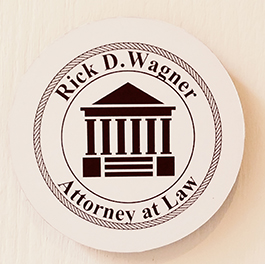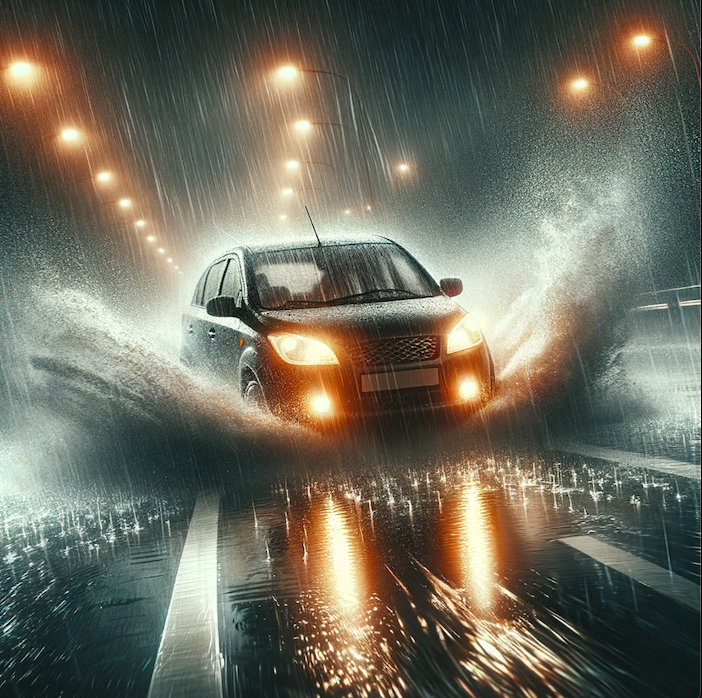By Ursula Nizalowski
As we transition from winter to spring, there comes the expectancy of more rain showers. But
while rain is good for the environment, it can be hazardous to drive through. There’s not only
the lack of visibility caused by tons of rain falling down, but also the risk of hydroplaning. Now
hydroplaning is when a car skids across slick wet roads in the same manner as ice due to the loss
of traction between the car’s tires and the surface. So having the right tires that are equipped to
handle rainy weather is a good idea, which will be discussed in more detail down below.

Difference in Tread for Hydroplaning
One of the primary causes for hydroplaning is a tire’s tread depth. Because according to
Bridgestone Tires, when the tread of a car tire is “worn down to 2/32nd of an inch or less” it
offers little resistance against the surface of a road that is covered in “more than 1/10th of an
inch” of water from rain. What that means is if there’s a lot of water on the road and the car’s
tires are not at peak condition, there’s less traction. Therefore, it’s more likely for the car to slide
across the road instead of driving through the water.
How To Pick the Right Tires
Type of Car – While some cars are designed for driving in all kinds of weather, some
aren’t. For example, Toyota says, “front-wheel drive vehicles are easier to drive in the rain than
rear-wheel drive vehicles,” meaning cars that move primarily using the front wheels are better
equipped to deal with rain compared to vehicles that use the rear wheels due to stronger traction.
And so it’s better to check one’s car type to see if special tires are required for rain or not before
purchasing them.
Budget – Depending on where a driver lives, it may not be necessary to buy rain tires
for their car. After all, tires can be expensive based on brand and quality. Then combined with
installation prices of $15 to $45 according to Tirebuyer, we’re looking at a needlessly large
purchase if the driver is in an arid environment that doesn’t get much rain versus one who does.
Rubber – If one is going to get rain tires installed, there are some factors to consider
such as the type of rubber that’s used. Because not all tires are made from the same rubber
compound as “tires designed for wet-weather conditions usually have a softer rubber compound
for better grip” says Big O Tires. Thus it’s important to find tires with the right rubber
compound prior to installing them.
Tread – As discussed before, hydroplaning can happen due to worn down tire treads.
So the tread of a tire is another factor to take into account when buying rain tires as they have
circumferential grooves that channel water off of them creating traction against the wet surface
of the road. But they should also be at the right depth as the Kalka Law Group advises changing
tires “when there is 4/32” of tread depth left” as that leads to less traction and increases the risk
of hydroplaning.
Best Rain Resistant Tires by Brand
Michelin CrossClimate 2 – Considered to be one of the best performing tires for
driving in rain by Medium, the CrossClimate 2 tire from Michelin has unique treads in a V-shape
pattern which “efficiently channels water away from the tire’s surface, reducing the risk of
hydroplaning and enhancing grip.” However, it’s slightly more expensive than other similar tires.
Vredestein Quatrac Pro – According to COR Wheels, Vredestein’s Quatrac Pro
tires redistribute rain water well but also adjust to changing temperatures if the weather clears up. This is due to the tire’s tread blocks which are dense and made of high silica compound,
giving them stronger circumferential grooves along with better temperature resistance. With that
said, these tires need constant tread replacements and struggle while driving through snow.
Continental ExtremeContact DWS 06 Plus – In comparison to the Quatrac Pro,
the ExtremeContact DWS 06 Plus tire by Continental has high angles in its circumferential
grooves that allows water to channel quicker between the moving tire and the wet surface. Plus
the car has good stability when steering along corners, which is a good thing to have when
driving along rainy terrain to prevent hydroplaning. But the tire doesn’t have much traction
when driving over ice and the lifespan of its treads isn’t great.
For more information on hydroplaning-related accidents and how to prevent them, feel free to
contact attorney Rick Wagner.

